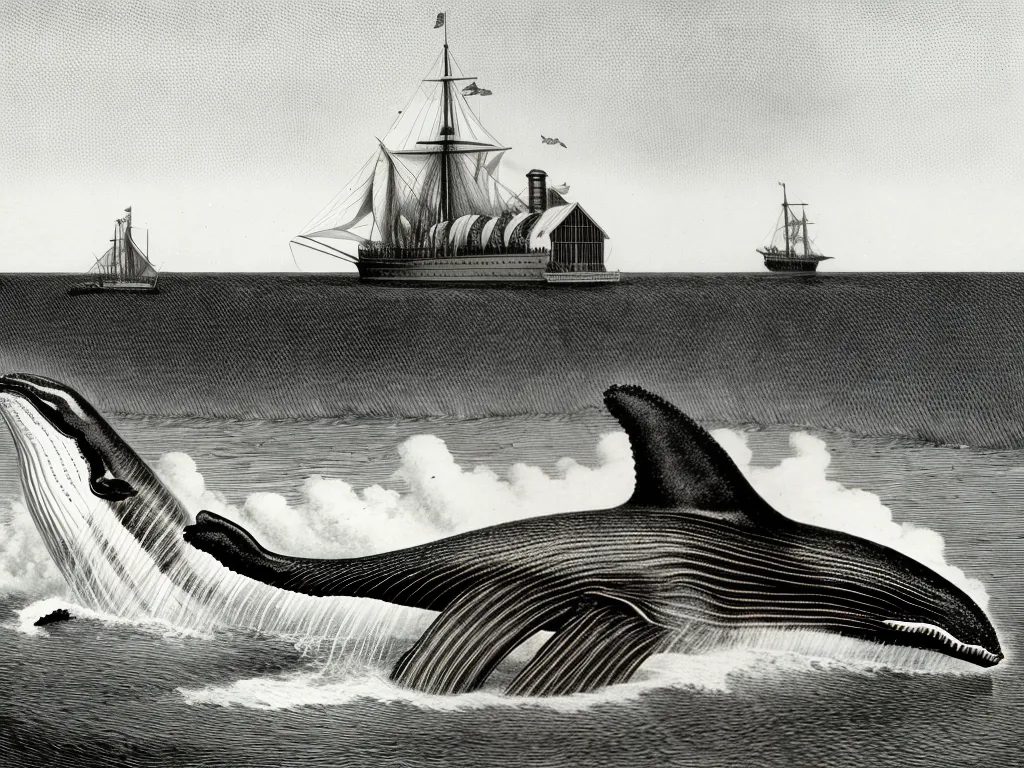
How Whale Oil Lit the Way in Early American Homes
Introduction
Prior to the mid-1800s, most American homes were dimly lit at night by candles or oil lamps. This changed with the rise of the whaling industry and the widespread availability of whale oil. Whale oil provided a clean-burning illuminant that made evenings at home brighter and more enjoyable. In this article, I will explore the history of lighting in early America, the whaling industry that enabled whale oil to become a primary lighting source, and the impact whale oil lamps had on daily life in American households.
Early American Lighting
In the 18th and early 19th centuries, candles and oil lamps were the main sources of artificial light in American homes. Candles were made from tallow, which is rendered beef or mutton fat, or from beeswax. Tallow candles were relatively inexpensive but produced a dim, smoky flame and unpleasant odor. Beeswax candles burned brighter and cleaner but were more costly.
Oil lamps, known as betty lamps, used fuels like whale oil, olive oil, or oil rendered from fish or flora seeds like flaxseed. Oil lamps provided more light than tallow candles, but were still relatively dim by today's standards. They also required regular cleaning to remove the soot they produced. Whether candles or oil lamps were used, early American homes were dark places after sunset, with reading, sewing, or other tasks requiring good eyesight nearly impossible.
The Whaling Industry Provides Whale Oil
The fledgling American whaling industry emerged in the 1700s, as whale populations close to colonial shores were depleted and whalers had to voyage farther out to sea to hunt the massive mammals. At first, whales were prized for their thick layers of blubber, which was rendered into oil used primarily for lubrication, soap-making, and leather tanning. But then it was discovered that oil made from whale blubber burned cleaner and brighter than other oils.
As American whalers ventured across the globe in search of whales in the early 1800s, the availability of whale oil steadily grew. Nantucket Island became the epicenter of whaling in America. At its peak in the mid-1800s, Nantucket was home to over 125 whaling ships and employed over 7,000 men in the whaling industry. This enabled the mass production and widespread use of whale oil for illumination.
Whale Oil Lamps Brighten Early American Homes
The rise of the whaling industry coincided with the invention of new lamp designs that were optimized for whale oil. The most popular whale oil lamp invented in the 1820s was the Bomshell lamp, which had a ring-shaped reservoir and adjustable wick.
With their newly designed lamps and ready supply of whale oil, Americans rapidly embraced whale oil lighting. By 1846, whale oil lamps provided over 90% of lighting in American homes. Families could now easily illuminate multiple rooms, enabling activities like reading, sewing, and board games after dusk. Stores, workshops, and other businesses could also stay open later with whale oil lamps lighting their interiors.
Some key benefits of whale oil lamps included:
- Produced a bright, clear flame
- Burned cleaner than other oils, without a rancid smell
- Was inexpensive and abundant thanks to the whaling industry
- Did not require lead wicks like candles
For several decades in the mid-1800s, whale oil lamps lit up homes, businesses, and lighthouses across America. But whale oil's predominance would soon be disrupted by the emergence of another illuminant - kerosene.
The Rise of Kerosene Lighting
In the 1850s, Abraham Gesner discovered how to distill kerosene from petroleum and shale. Kerosene burned even cleaner than whale oil and was cheaper to produce. The discovery of petroleum deposits in Pennsylvania in 1859 made kerosene widely available. Kerosene lamps soon surpassed whale oil for lighting, fueled by ample and growing petroleum supplies.
By 1860, the whaling industry was in decline as kerosene rapidly replaced whale oil. The peak whaling year was 1846, with over 735 American whaling ships hunting whales. But the industry plummeted after 1850. With little demand for whale oil, the American whaling industry faded away.
Though whale oil's time was short-lived, it illuminated the way for better lighting and helped improve daily life for many Americans in the first half of the 1800s. The whales that provisioned those lamps are now protected, but we still benefit from their oil's early contribution to our progress.
Conclusion
In early America, whale oil lamps provided the best and most abundant source of illumination available. For several decades in the mid-1800s, whale oil lit homes, businesses, and lighthouses across the growing country. The whaling industry enabled whale oil to be mass-produced and widely used during this period. Though kerosene lighting would later supersede it, whale oil was a clean-burning, economical lighting solution that improved daily life for many Americans before the electric light. The brief whale oil era illuminated American homes and drove progress in lighting technology.